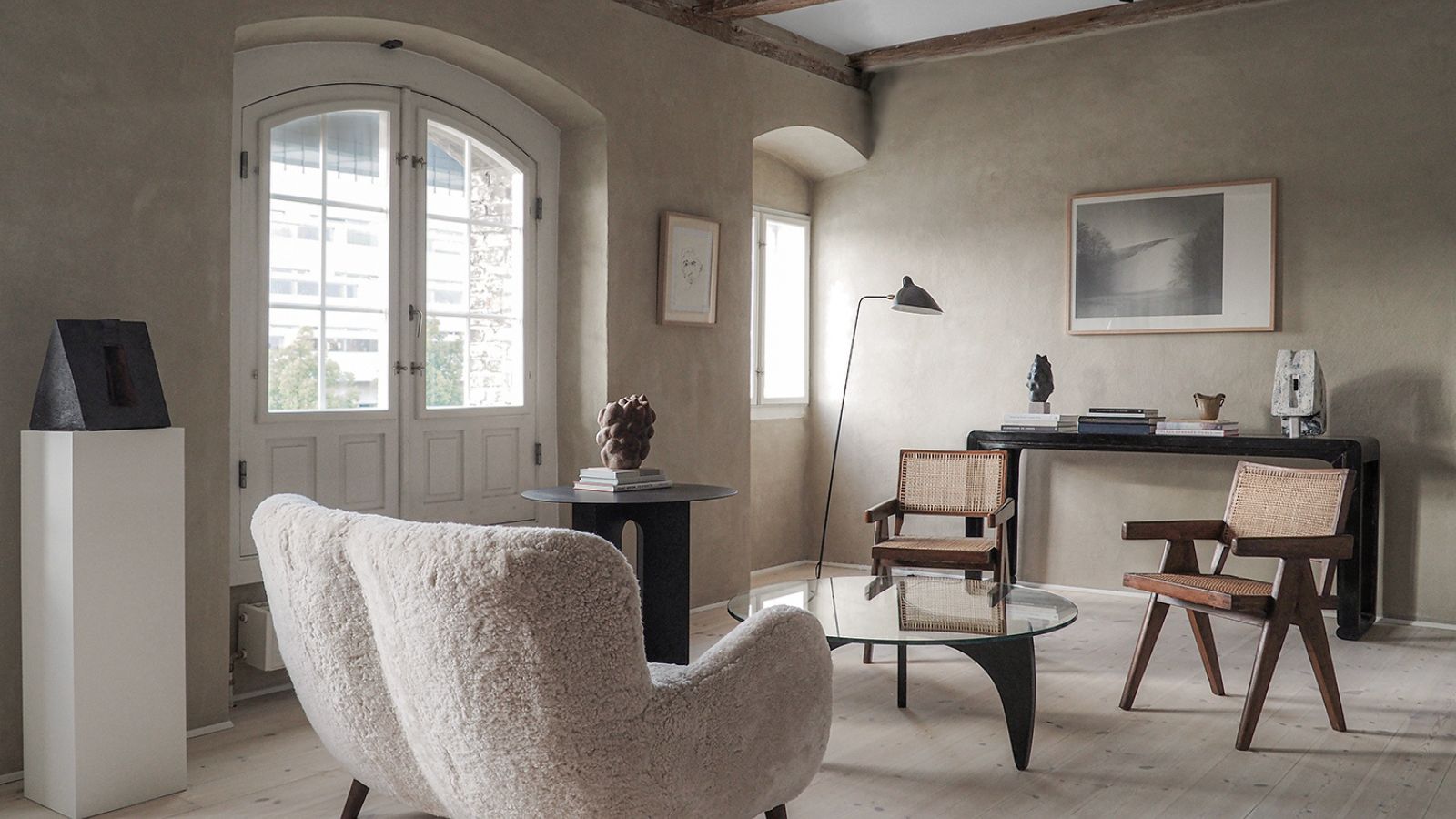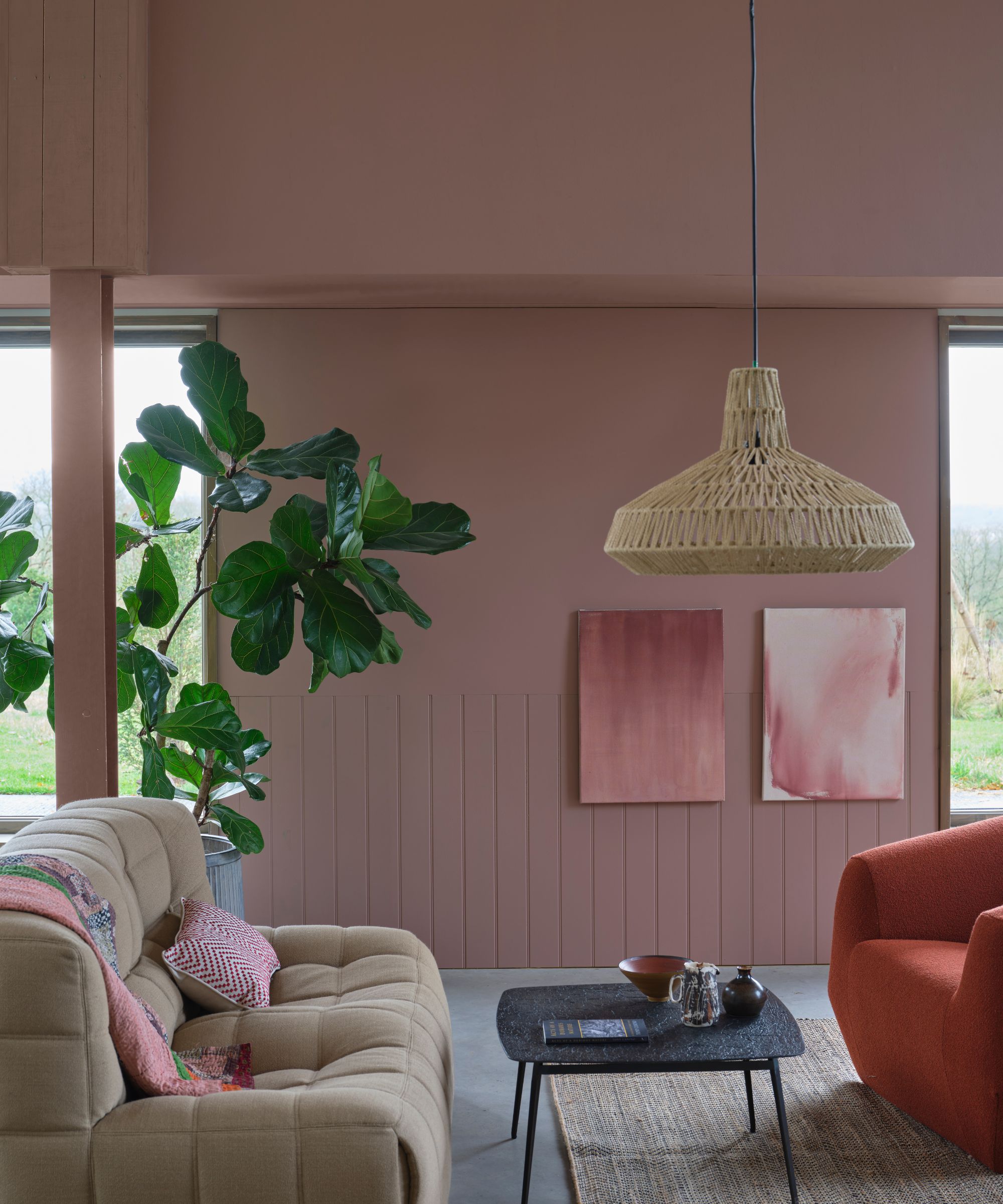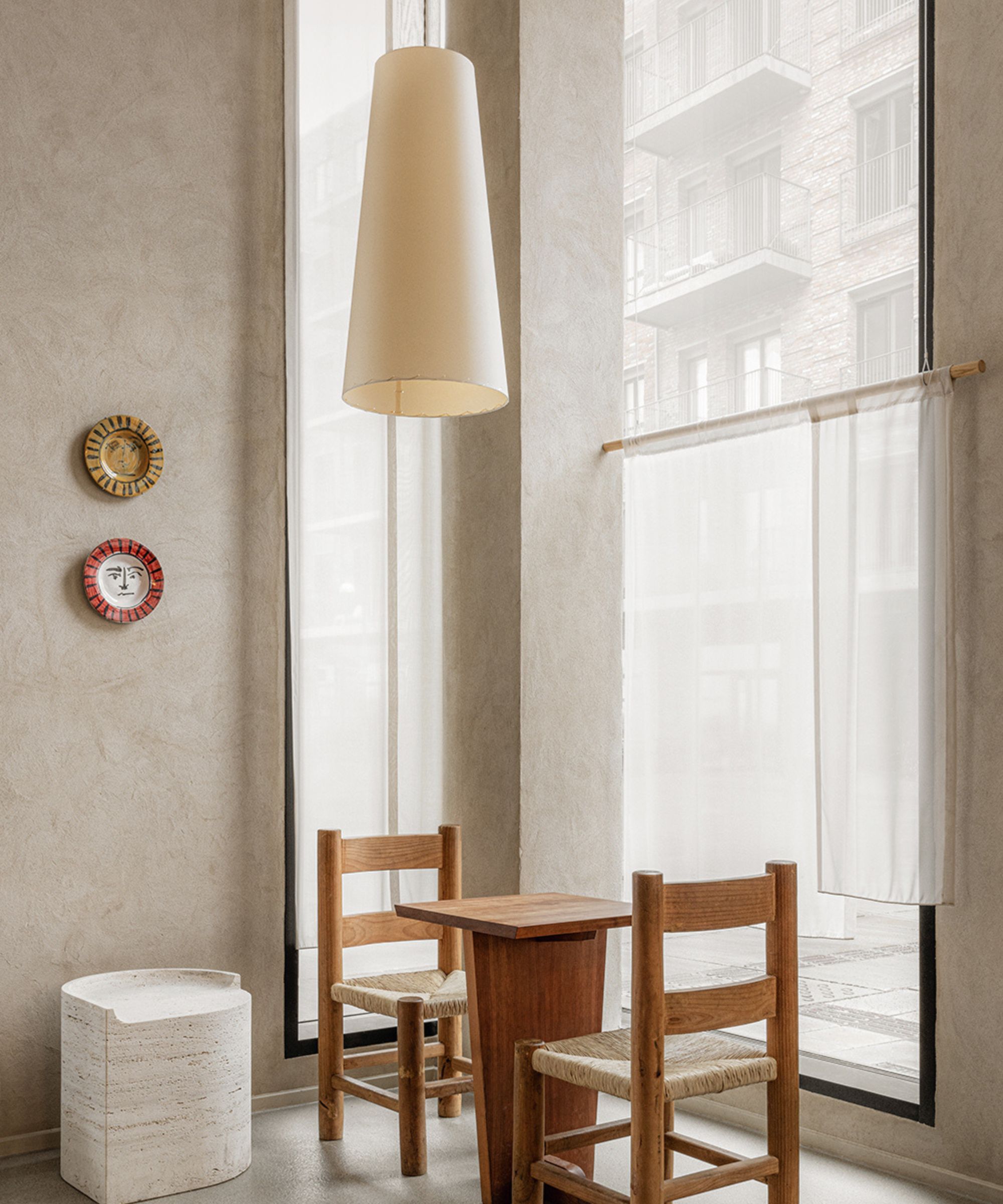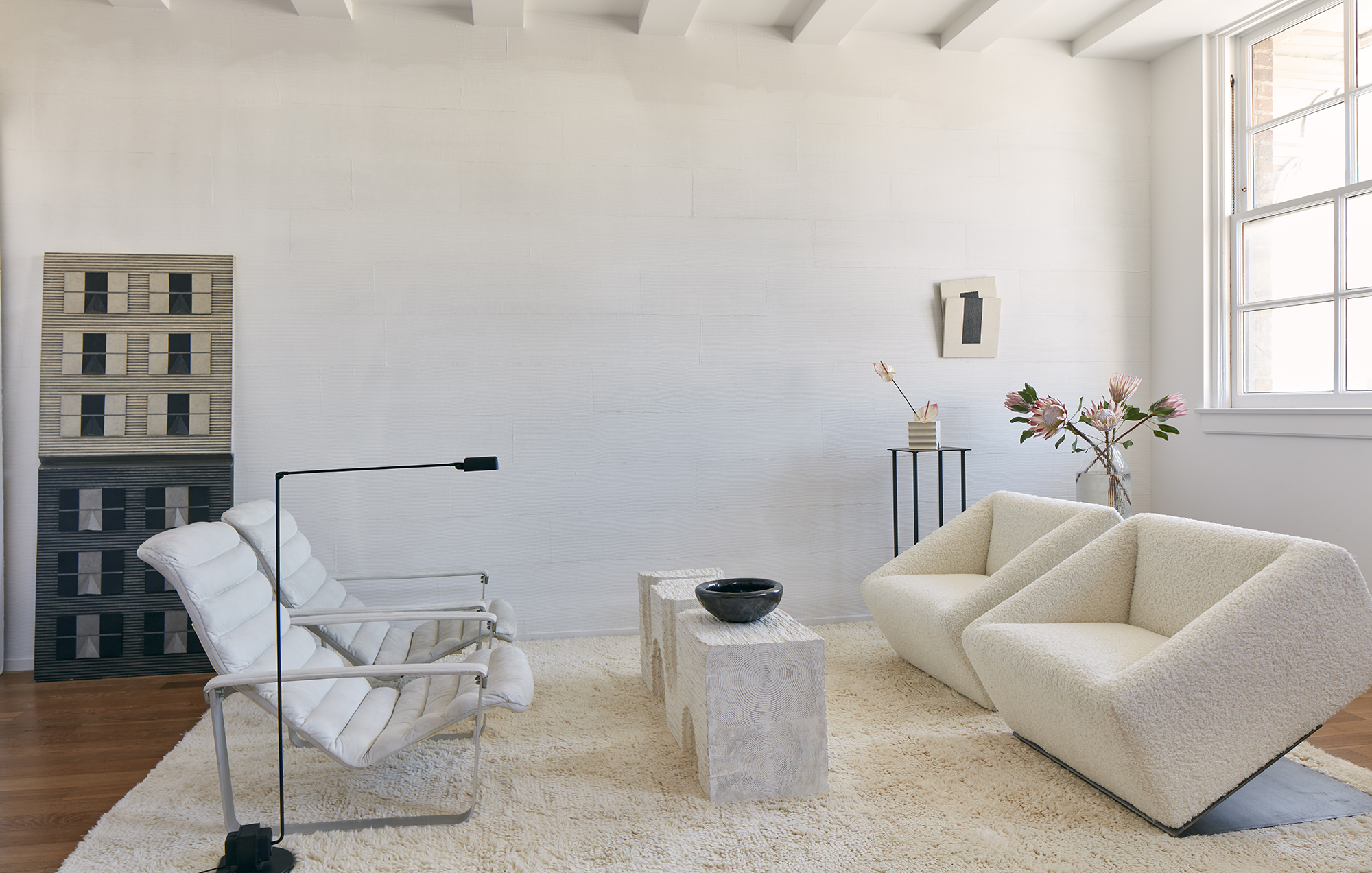Is minimalism actually out of style? Designers on whether this long-lived look will ever be out of fashion
Designers have fallen out of love with minimalism, but is it dead? And what are they doing instead to make calm and soothing schemes?

It's been a long while since I've seen a house that is truly minimalist. As an interior design editor, I get submitted projects every day, and talk to designers almost as often. And in the whole of my 20-year career, this is the longest it's been since a totally pared back home crossed my desk, around four years, in fact.
Which leads to me wonder is minimalism out of style? And if so, what interior design style is replacing it? ‘To my delight, it does seem like minimalism is currently dead,’ a gleeful Joa Studholme told me recently. As the Color Curator at Farrow & Ball, she literally sets the backdrop for how we all want to decorate. ‘We’re all yearning for something more maximalist, more grounding,' she added. I decided to find out what other designers thought, and whether minimalism really is as cold as detractors of the aesthetic always believed it to be.
Where are the minimalists at?

Minimalism emerged as a reaction to the chintz and heavily decorative design trends of the 1950s. It was characterized by empty counters, white color schemes and nothing on display as far as the eye could see. British designer John Pawson is arguably the godfather of minimalism, although he would never call himself that. He's been paring back decor for decades, crafting homes that are not empty, exactly, but where only the essentials are out on display.
And even he is stepping away from pure minimalism. 'I do believe that you don’t need more than is essential, and that is hard to define,' he says. 'We have a set of silver Georgian three-pronged forks that could be considered more than you actually need, but they’re very wonderful. It depends on how you live. You need a certain amount of things for life to go smoothly, though if you have more than you need it gets in the way. I have a shelf that I’d love to keep empty but I wasn’t allowed by the rest of my family to get away with that. It’s always a receptacle for keys, dog bone toys. I do clear it up once a week.'
John Pawson himself has a 'stuff shelf.' Minimalism really is dead.
What ideas are designers taking from minimalism?

'I think you could say minimalism is dead,' says interior designer Lara Bates, founder of the studio Lara Et Al. 'But that doesn't mean spaces can't be calming. I want homes to be exciting and interesting and pleasing on the eye but also comfortable.'
'With any home, you have to remember that this is for someone to live in.' She says there is a middle ground to be found, one that allows real life to be played out in a scheme where a single used glass doesn't totally ruin the vibe, but also that still soothes you in the way true minimalism was always meant to. 'A home can have lots of color and interest but still be pleasing and calming,' she says.
She says the best way to do this is to color drench rooms, but in shades that tend to be neutral. 'The key is to use the same color for the ceiling and the walls, created a cocoon,' she says. What this takes from minimalism is the belief in unbroken sight lines, even if it's not the all-white box true minimalists would have chosen.
The room above is a good example of the way designers do 'maximalism' now - it's not overpowering, it's not pattern on pattern, but there is plenty of color and interest.
Is minimaluxe the new minimalism?

'Minimaluxe' was a term I coined for the rise of warm minimalism that we see in design today. It's not truly minimalist at all – there are objects on display, there are colors on the wall, there are rough edges and veined surfaces. But it's characterized by not too many of any of the above.
If there is a color, it's used either sparingly or all over, so it doesn't fight with too much else. If there are objects on display they have space around them so they don't feel cluttered. And if you have a rough edge (on a wood coffee table, perhaps) then it's near a smooth one.
The interior designer Dannielle Siggerud is a shining light of the minimaluxe movement. She created this dining room above that could never be truly minimalist thanks to the addition of those plates. 'I remove all that is unnecessary, stripping the room down to its essence, and the lighting, doors, fixtures, and storage become part of the structure,' she says.
So far, so minimalist. But this is where it changes. 'Everything you can touch gets a lot of attention, adding warmth, a sense of personality and presence,' she says. In old minimalist times, warmth and personality were frowned upon. 'I am also conscious about using materials that age beautifully – in that way, the space evolves in time together with the user, transforming and carrying traces of a lived life,' she says.

'I love working with natural materials, especially stone and wood,' Danielle says. 'It’s about creating balance and bringing out the qualities of each material. By playing with contrasts – for example, cold and warm, smooth and textured – the materials and the space become elevated, lifting each other up. Natural materials, especially aged materials, add warmth, soul, and emotion. Objects and furniture made of artificial materials can be hard to connect with emotionally and sensorially and I tend to be mindful of that.'
She goes on to extend the minimaluxe palette even further. 'Metals and harder textures like stone are usually stronger in terms of their functional qualities and durability, so should be used on surfaces you are in direct contact with, like a refined lever handle, faucets in the bathroom, and a stainless-steel kitchen worktop, but they can also be used unexpectedly,' she says. 'And stone is often associated with hard, cold feeling; the organic shape is meant to provoke the conception of stone and soften the perception of it.'
So does minimalism live on?

Vincent Van Duysen is another designer who is associated with minimalism but who actually embraces a more varied palette now. 'The starting point is to use colors, finishes and materials that soothe and enhance the soul,' he says. 'There is no one rule that fits all, but from experience, organic and all-natural materials with neutral tones are key to reaching such goals. Same thing with furniture, I recommend using timeless designs that are built with tactile and warm materials, same for accessories, and so on.'
He designed the home above which, admittedly, is pretty minimalist. But actually the texture of the walls and the contrast of materials take it out of the world of classic minimalism.
Ultimately, while minimalism has been replaced with a love of favorite things and a desire for warmth of texture, many of its principles live on: a desire for peaceful homes, a craving to get rid of clutter, and for colors that don't fight with each other but are like a soothing balm to live with.
Sign up to the Homes & Gardens newsletter
Design expertise in your inbox – from inspiring decorating ideas and beautiful celebrity homes to practical gardening advice and shopping round-ups.
Pip Rich is an interiors journalist and editor with 20 years' experience, having written for all of the UK's biggest titles. Most recently, he was the Global Editor in Chief of our sister brand, Livingetc, where he now continues in a consulting role as Executive Editor. Before that, he was acting editor of Homes & Gardens, and has held staff positions at Sunday Times Style, ELLE Decoration, Red and Grazia. He has written three books – his most recent, A New Leaf, looked at the homes of architects who had decorated with house plants. Over his career, he has interviewed pretty much every interior designer working today, soaking up their knowledge and wisdom so as to become an expert himself.
-
 Extend the lifespan of your appliance with 5 simple but crucial washing machine maintenance tips
Extend the lifespan of your appliance with 5 simple but crucial washing machine maintenance tipsFrom cleaning the filters to keeping the door open, experts reveal the washer tips they swear by
By Andy van Terheyden Published
-
 These are the 6 must-have colors to decorate with in April 2025
These are the 6 must-have colors to decorate with in April 2025What do retro-inspired yellows and beautiful blues all have in common? They're on our hot list for the season ahead
By Sophia Pouget de St Victor Published
